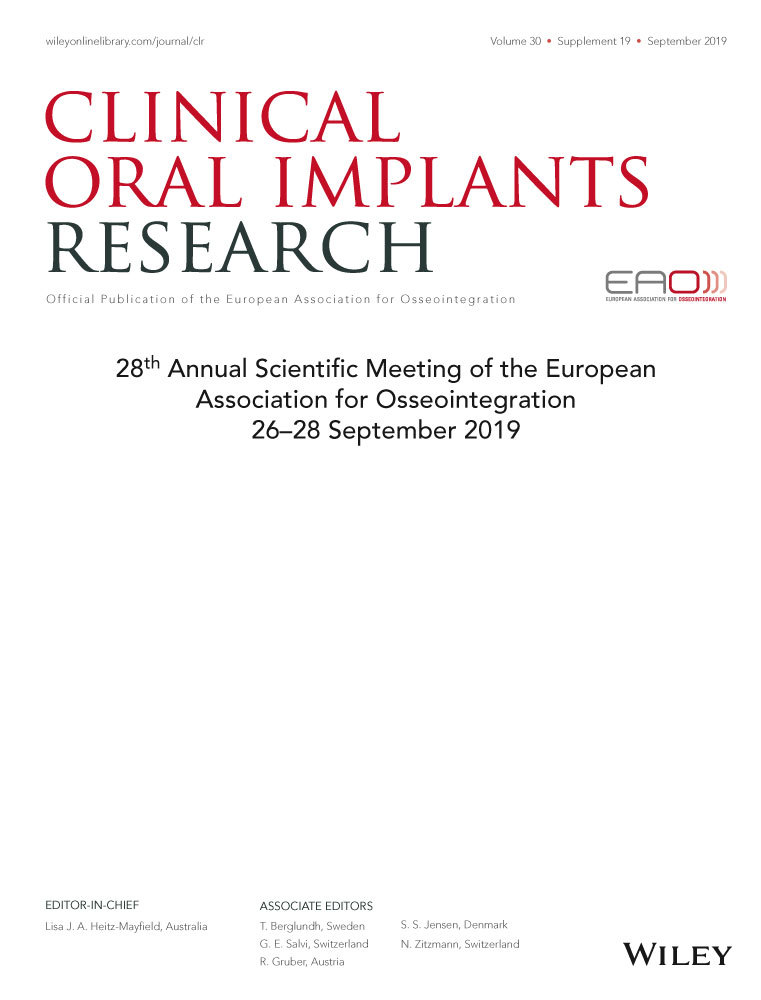Inhibition of Osteoclast differentiation based on precipitation time of titanium surfaces immersed in modified simulated body fluid
16004 POSTER DISPLAY BASIC RESEARCH
Background
The purpose of this study is to investigate the changes of osteoclast differentiation inhibition according to the period of precipitation when titanium disks were immersed in Modified simulated body fluid (mSBF).
Aim/Hypothesis
Immersion of titanium disks in mSBF could prevent RAW 264.7 cells from differentiating into osteoclasts. Inhibition activity could change according to the immersion periods.
Material and Methods
Titanium alloy (Ti grade III) disks with machined surfaces and anodized surfaces were immersed in distilled water and mSBF, respectively. The immersion periods were 7 days, 14, 21 and 28 days, and the control group was immersed in distilled water for each period. RAW 264.7 cells capable of differentiating into osteoclasts were used to measure the number of adherent cells, the measurement of TRAP activity, and the expression pattern of NFATc1 by western blotting.
Results
The degree of inhibition of osteoclast differentiation was found to be statistically significant when the disks were immersed in mSBF for more than 14 days on both machined surfaces and anodized surfaces. There was no correlation between immersion time and cell attachment. When the disks were immersed for more than 14 days, TRAP activity was decreased and NFATc1 expression was inhibited. Furthermore, the decrease in TRAP activity and the inhibition of NFATc1 expression remained unchanged.
Conclusion and Clinical Implications
Immersion of titanium disks in mSBF for more than 14 days can prevent RAW 264.7 cells from differentiating into osteoclasts. Inhibition activity does not change even if the immersion period is for more than 14 days.




